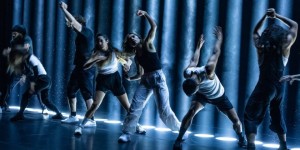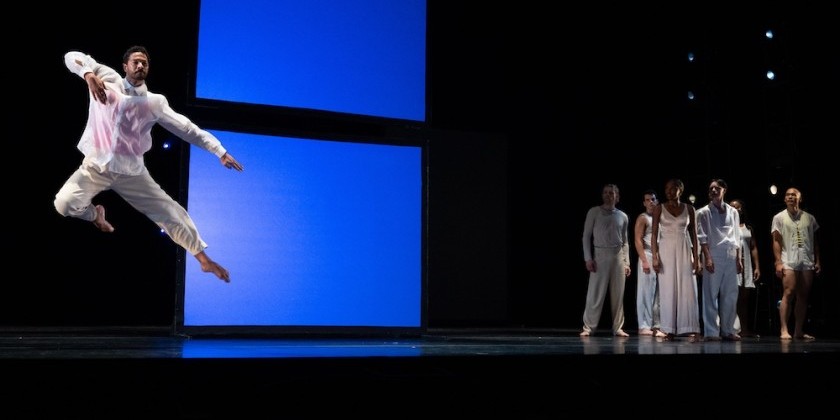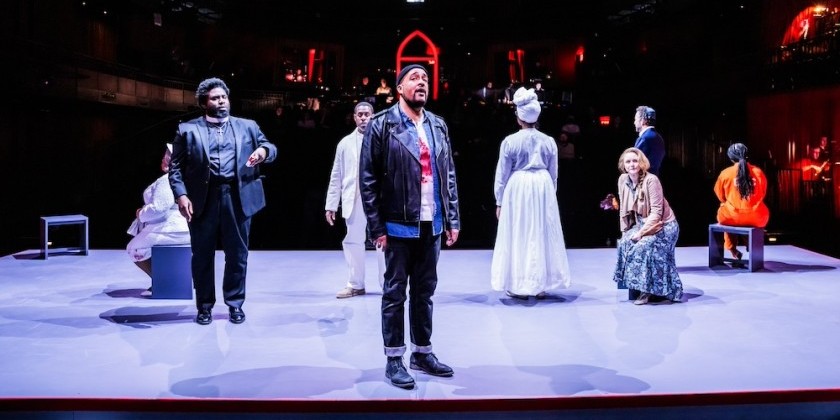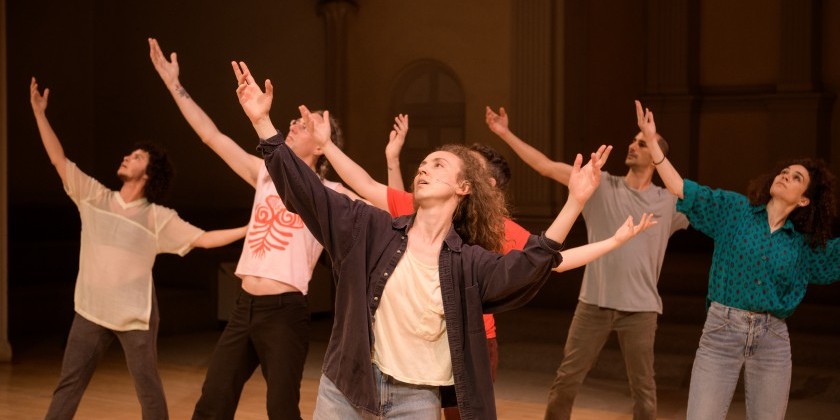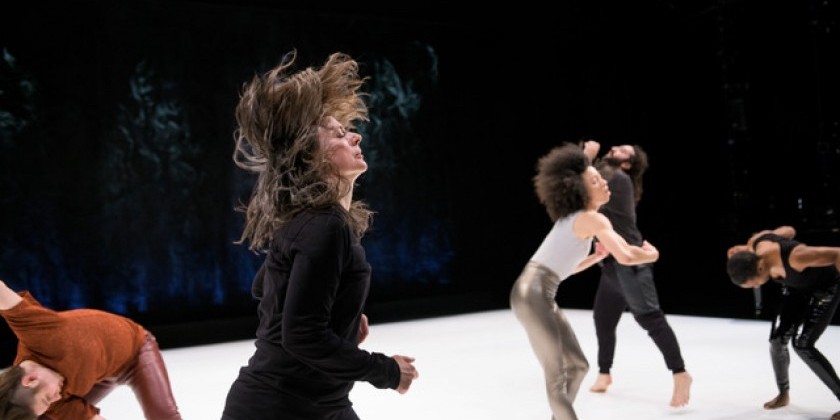IMPRESSIONS: Cynthia Oliver's "Virago-Man Dem" at BAM

October 25, 2017
Venue: BAM Fisher (Fishman Space)
Choreography and Direction by: Cynthia Oliver
Performed by: Duane Cyrus, Jonathan Gonzalez, Niall Noel Jones, and Ni’Ja Whitson
Visual Art: Black Kirby (John Jennings and Stacey Robinson)
Composer: Jason FInkelman
Lighting Design: Amanda K. Ringger
Costume Design: Susan Becker
Virago refers to a strong woman of courage. Historically, it also refers to a domineering or bad-tempered woman. Cynthia Oliver’s Virago-Man Dem tackles the question, “How can a woman choreograph masculinity, without resorting to stereotypes?” Through movement, music, and visual art provided by Black Kirby, Oliver explores the presence of male/femaleness. She taps into Afro-Caribbean and African-American ancestries of performers Duane Cyrus, Jonathan Gonzalez, Niall Noel Jones, and Ni’Ja Whitson, grounding their personal experiences into broader considerations about black masculinity.
One Nation Under a Groove by Funkadelic plays in the background. Four hoodie-wearing figures assemble onstage with no pretense or ceremony. They settle into relaxed stances facing upstage. Their hands rest casually by their side or in their pants pockets. House lights remain up, inviting the audience to continue side conversations.
From offstage, someone yells, “GO!” There is a quick silence, but the figures do not move. Cobalt-blue light consumes the back wall. Soft lines break through the solid color and trickle into focus. These visual impressions move like water yet suggest the texture of asphalt. Gradually, projections of hybrid beings (part man, animal, machine) materialize and pan across the wall.

The dancers jerk into action. A sporadic elbow bends. A knee folds then locks into place. They gravitate into a clump as the movement builds. Weaving through each other’s pathways, gestures relay from one body to the next. Grunts and vocal undulations exaggerate the body’s rhythms. They see, transmit, and translate.
Virago-Man Dem journeys through a series of vignettes accompanied by jazz, ambient, and rhythmic soundscapes. Each scene peeks into masculine experiences — some personal, some shared. Cyrus tries on different tones of base in his voice. Gonzalez parades around in an athletic jersey with the word Bossy splashed across the front. He flourishes gold fabric in his hand while remembering familial songs and quotes in Spanish. Whitson pantomimes through memories of family football games. Jones meanders around, often alone, lavishing in spiraling backbends.

Trios and duets materialize and then dissipate throughout, borrowing movement vocabulary from African, contemporary, and house dance styles. In one moment, they push through space with rhythmic chugs and curved arms. They dribble imaginary basketballs that rebound and ricochet into sustained jumps and quick pivots. Following a dream-like sequence, they hum A Woman’s Work, then converge on the ground, negotiating around intertwined limbs, fingers . . . bone crisscrossing with bone.
From code switching to colloquialisms, Virago-Man Dem highlights black masculine multiplicity. There is no one way of being. This ambiguity encourages viewers to unpack their own relationship with masculinity while considering the experiences of straight vs. gay men, American vs. Caribbean men, or performers vs. non-performers. Oliver tackles this insurmountable topic with rigor and collective curiosity. Her work surfaces the occasional stereotype, perhaps that is inevitable. In order to speak about race and gender one must address stereotypes to move past them.






